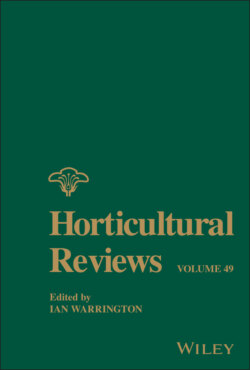Читать книгу Horticultural Reviews, Volume 49 - Группа авторов - Страница 15
II. HISTORY AND TAXONOMY OF HYDRANGEA
ОглавлениеHydrangeas have been cultivated for centuries in Asia, with several clonal varieties (such as ‘Rosea’ and ‘Sir Joseph Banks’) having been selected prior to exportation to Europe and then being renamed (Church 2001). Hydrangea arborescens L. was exported to Europe in 1736 by John Bartram, making it the first Hydrangea species to be cultivated on that continent, this occurring before the genus was even named. The name Hydrangea was first used by Johann F. Gronovius to describe H. arborescens in Flora Virginica (Gronovius 1739) and was later used by Linnaeus for the same species in Species Plantarum (Linnaeus 1753). However, previous to the establishment of the Hydrangea genus, the first plants which are now known as Hydrangea were described by Engelbert Kaempfer as Sambucus (Church 2001). In 1784, Carl Peter Thunburg described what are now known as H. macrophylla ssp. macrophylla and H. macrophylla ssp. serrata as Viburnum macrophyllum and V. serratum, respectively, in his Flora Japonica (Thunberg 1784); Sir Joseph Banks then introduced these species into Europe for the first time in 1789 (McClintock 1957). Ruiz and Pavón first described the South American Hydrangeas in 1789, placing them in the genus Cornidia (Ruiz and Pavón 1789). Hydrangea quercifolia was first described by William Bartram in 1791; this is discussed below in further detail. Later, in 1859, Philipp Franz von Siebold first described H. paniculata Sieb. and several other Asian Hydrangea species (Mallet et al. 1992).
A monograph for the genus was written by McClintock (1957), which divided Hydrangea into 23 species. Although this study was based entirely on herbarium voucher specimens, it has been the authority on Hydrangea taxonomy until recently, as evidence has been building for an updated classification. The plants in this genus are woody shrubs, lianas, or small trees, and either semi‐evergreen or deciduous. The inflorescences of Hydrangea species consist of many inconspicuous perfect florets surrounded by few to many conspicuous florets; the conspicuous florets typically contain four large petaloid sepals and have reduced fertility. Hydrangea flowers are mostly corymbs, with two notable exceptions; H. quercifolia and H. paniculata, which are the only Hydrangea species to have inflorescences in the form of panicles.
Although historically Hydrangea was placed in the Saxifragaceae, newer genetic evidence (Morgan and Soltis 1993) supports Hydrangeaceae as its own family in the order Cornales. The Hydrangeaceae family consists of about 270 species within about 17 genera (De Smet et al. 2015). The family is divided into two subfamilies, Jamesioideae and Hydrangeoideae (Hufford et al. 2001). Subfamily Hydrangeoideae contains two tribes, Philadelpheae and Hydrangeeae (Soltis et al. 1995). Hydrangeeae contains nine genera and is further broken into two clades (or subtribes), named Hydrangea I and Hydrangea II (Samain et al. 2010). Other genera in Hydrangeeae are Deinanthe, Cardiandra, Schizophragma, Pileostegia, Decumaria, and Platycrater (Hydrangea I), and Dichroa and Broussaisia (Hydrangea II).
A recent phylogenetic analysis based on chloroplast markers (De Smet et al. 2015) has considerably altered the structure of the genus Hydrangea by including all species in the tribe Hydrangeeae into the genus Hydrangea and reworking the old generic names into sections (Figure 1.2). This taxonomic treatment is consistent with several previous studies and is well supported by molecular and morphological data (Soltis et al. 1995; Hufford et al. 2001; Samain et al. 2010). This new classification places H. arborescens, the type species, in its own section. Although it is most closely related to H. arborescens, due to inconclusive analyses, H. quercifolia was not placed into a section. Further research is necessary in order to accurately resolve the taxonomy of the North American Hydrangea species.
Figure 1.2 Diagram of Hydrangeaceae taxonomy. The taxonomy between family and tribe (Source: Based on Hufford et al. 2001), and the taxonomy within Hydrangeeae (Source: Based on De Smet et al. 2015).
